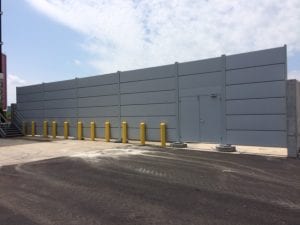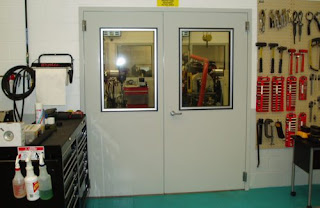The important role of an acoustic door seal
The essence of an acoustic door seal is derived from a basic property of sound. Sound waves travel through any opening with very minor loss. With the amount of air flowing through a gap enhances in proportion with the gap size, the gap size in a sound barrier doesn’t matter. A small hole transmits almost as much sound as a much bigger gap or hole.
Due to this phenomenon, any unsealed gaps and clearances in the door assemblies efficiently cancel out the noise reduction benefits of the sound rated doors. The loss of performance is specifically severe at medium to high frequencies, where normal conversation level generally happens along with installation of compressor sound blanket.
For acoustic door seals or a vibratory bowl feeder to be effective in blocking sound, the seals across the head, jamb and sill on the door should be complete, airtight and uninterrupted throughout the service life of the door. For uninterrupted contact, the door seals should be installed all on the same side of the frame and the door. Performance also relies on good surface contact between the frame or door edge and the seals, which can generally be accomplished using compression seals.
Just like the door itself, the mass of the sealing material utilized in acoustical gasketing is a key factor in accomplishing higher sound reduction ratings. Acoustical door sealing kits are available that comprise of an automatic door bottom, which is spring operated, dropping a neoprene seal on the threshold for sound proofing room efficiently and for sealing off the bottom of the door. Moreover, the door seal kits include top quality neoprene door jambs for the top and the vertical sides of the door. Custom kits are available for undersized, oversized doors and also double doors.




Comments
Post a Comment